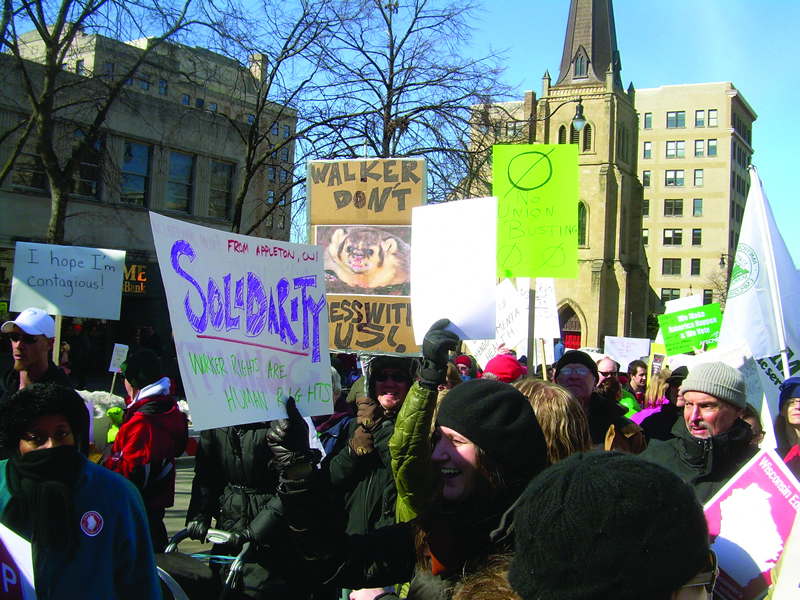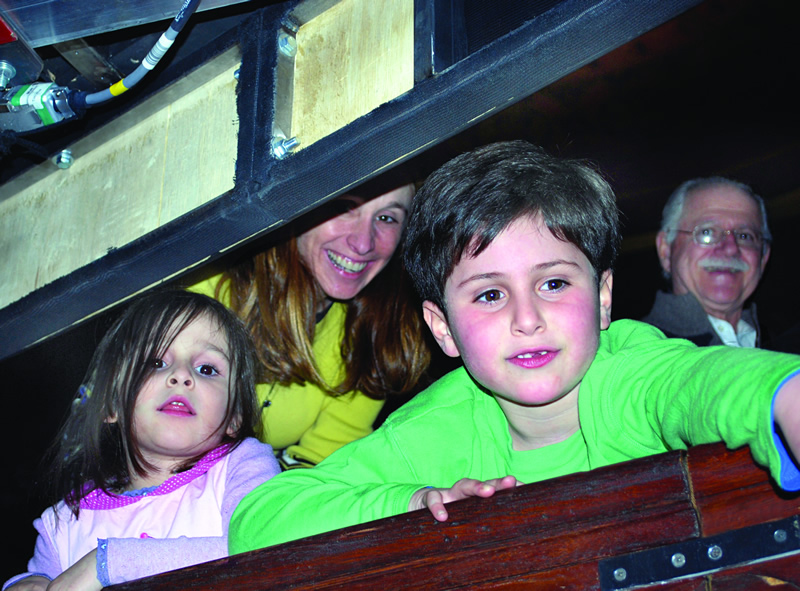Allegro
The Arts are Under Attack (Again!)
Volume 111, No. 3March, 2011
Here we go again. With familiar clichés about “making tough choices in these tough economic times,” the arts are under attack.
Perhaps I should say the arts remain under attack. The slashing and burning of arts budgets nationwide hasn’t really stopped. Nor has the rhetoric of freedom-loving politicians determined to stifle freedom of expression abated much either.
Nationally, the culture wars of the 90’s are darkening our doorways again. In New York, the state arts council budget saw its grantmaking funds slashed twice in 2008. Then it sustained a $3.5 million cut in 2009 and a $6 million cut in 2010. Now it faces a $10 million cut this year.
Despite the jobs that the arts create and sustain, the income they generate, and the tax revenue they send to local and state coffers, too many elected officials cling to the myth that funding the arts is unnecessary. These politicians seem to believe that little or no funding for the nonprofit creative sector will have no negative economic impact.
Institutional ignorance of the arts isn’t limited to the nonprofit sector. Many politicians are unaware of or simply dismiss the link between receiving a strong, comprehensive arts education and the benefits it yields.
For example, a Wallace Foundation study revealed that school children who participate in arts demonstrated the following:
- Improved academic performance
- Improved attitudes and skills that promote the learning process
- Improved general life skills, such as critical thinking and self-discipline
- Improved understanding that one’s behavior has consequences
- Improved pro-social attitudes and behaviors among at-risk youth
If far-sighted leaders who understand this can’t reverse this dangerous, scorched-Earth policy toward arts funding and arts education, our nation faces a dismal and uncertain future. It’s like a NASCAR driver stuck with a pit crew hostile to transmission fluid, even though it makes the car go forward. Without it, the driver is doomed to go nowhere. And that is precisely where many of our leaders are taking the country when it comes to arts funding and arts education.
Conversations on arts education by our elected leaders at all levels of government appear nonexistent. However, discussions about education in the U.S. revolve around a single concept: competition. In fact, this word, along with its variations, appeared 11 times in Obama’s state of the union address, seven times in Cuomo’s state of the state address and six times in Bloomberg’s state of the city address.
Incidentally, those speeches had another thing in common – the number of references to the advantages of a well-rounded arts education: zero. Ironically, in 2008, candidate Obama released the following statement on his arts policy:
“As president, Barack Obama will use the bully pulpit and the example he will set in the White House to promote the importance of arts and arts education in America. Not only is arts education indispensable for success in a rapidly changing, high skill, information economy, but studies show that arts education raises test scores in other subject areas as well.”
Those leaders overlook long established truths on the advantages of a fully implemented arts curriculum in our public schools. Consequently, their respective statements on education ring hollow, sounding like a string of recycled bromides that over-emphasize school competitiveness as a means to acquire 21st century technical jobs. What about the creative sector? In addition to the extraordinary cultural, developmental and educational benefits of the arts in all people’s lives, one topic absent from national discourse is that the arts also mean jobs – real careers that enable us to own our homes, send our children to college, sustain local economies and plan our futures.
The current assault on the arts and arts education is broad and deep. The president wants to cut the budget of the National Endowment for the Arts by $21 million. The Republican Study Committee, comprised of 165 members of Congress, wants to eliminate it completely. It also wants to gut key arts education programs at the U.S. Department of Education and all funding for NPR and PBS.
Governor Cuomo, while pitting public sector unions against private sector unions, seeks to cut $10 million from the NYSCA budget. Mayor Bloomberg is threatening to eliminate 6,000 teaching jobs and reduce library hours. His current school chancellor has no background in education. College tuitions are on the rise nationwide, up as much as 30 percent in California.
Adding insult to injury, many governors (New York’s included) and other politicians continue their collaborative offensive on experience, institutional memory and problem solving by threatening the livelihoods of our nation’s longest serving educators. Given this scenario, one might think that the emergent model of education in the U.S. is to provide just enough training to supply employers with a continuous source of cheap, unskilled and low-skilled labor.
THIS FAR, NO FURTHER
We cannot sit on the sidelines and watch work in the nonprofit arts sector dry up. Nor can we expect other people to advocate for us. We must not sit idly by while those beholden to the for-profit standardized testing industry cheapen the quality of public education and turn our kids into arts-challenged, rote memorizers and test takers.
We know that schools with strong arts programs produce smart, well-rounded students. The Center for Arts Education released a study last year that revealed that New York City “schools in the top third in graduation rates offered their students the most access to arts education and the most resources that support arts education.” Moreover, school districts with collective bargaining agreements yield strong schools with smart students. To wit: there are five states that outlaw collective bargaining for educators. Here are their state rankings on ACT/SAT scores:
- South Carolina – 50th
- North Carolina – 49th
- Georgia – 48th
- Texas – 47th
- Virginia – 44th
As it happens, Wisconsin, whose teachers are protected by collective bargaining agreements, is ranked second in the country. (Thank you, Randy Landau.)
A great writer once said: “There is a connection to progress in society and progress in the arts. The Age of Pericles was also the Age of Phidias. The Age of Lorenzo De’ Medici was also the Age of Leonardo DaVinci. The Age of Elizabeth was also the Age of Shakespeare.”
Artists and arts educators should take inspiration from the nonviolent protesters overseas and also at home – in Wisconsin, Ohio, Indiana and elsewhere. It’s up to us: if we do nothing, we’ll get nothing.
Antagonism toward the arts means job losses. Illiteracy on arts education means long term decreases in our ranks and steady reductions in our audiences. Perhaps more forebodingly however, is what this says about the role the arts will play in American life.
In 1931, Aldus Huxley wrote of a future when people didn’t want to read books, were distracted by cheap, mass produced goods and were more interested in gossip than the truth. We need a massive, collective effort to push back against this philistine crusade for ignorance. Most importantly, we must ask ourselves if the Brave New World we seek includes equal access to the arts and a robust, well-rounded education – or if it succumbs to the one Huxley warned us about.


